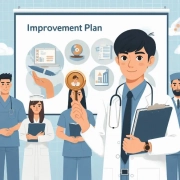NURS FPX 4900 Assessment – Assessing the Problem: Quality, Safety, and Cost Considerations Example
NURS FPX 4900 Assessment 2 – Assessing the Problem: Quality, Safety, and Cost Considerations.
NURS FPX 4900 Assessment – Assessing the Problem: Quality, Safety, and Cost Considerations Assignment Brief
Course: NURS-FPX 4900: Capstone Project for Nursing
Assignment Title: Assessment 2 – Assessing the Problem: Quality, Safety, and Cost Considerations.
Assignment Instructions Overview:
The main goal of this assignment is to evaluate the overall impact of health conditions on healthcare, focusing on aspects related to care quality, patient safety, and associated costs. By exploring different elements like healthcare practices, policies, and effective methods, the goal is to gain insights into effectively handling health challenges. This assignment encourages students to dig into the complexities related to health conditions and suggest practical approaches based on evidence to enhance overall outcomes.
The Student’s Role:
As a healthcare student in your respective program, your task is to approach this assignment with a critical and analytical mindset. Conduct thorough research to understand the details of various health conditions and their impact on healthcare quality, safety, and costs. Apply healthcare practices and policies to assess their influence on patient care. Develop practical and evidence-based strategies for dealing with health challenges. Demonstrate your commitment to professional accountability by carefully tracking practicum hours related to managing health conditions.
Detailed Assessment Instructions for the NURS FPX 4900 Assessing the Problem Quality Safety and Cost Considerations Assignment
In a 5-7 page written assessment, assess the effect of the patient, family, or population problem you’ve previously defined on the quality of care, patient safety, and costs to the system and individual. Plan to spend approximately 2 direct practicum hours exploring these aspects of the problem with the patient, family, or group you’ve chosen to work with and, if desired, consulting with subject matter and industry experts. Document the time spent (your practicum hours) with these individuals or group in the Core Elms Volunteer Experience Form. Report on your experiences during your first two practicum hours.
Introduction
Organizational data, such as readmission rates, hospital-acquired infections, falls, medication errors, staff satisfaction, serious safety events, and patient experience can be used to prioritize time, resources, and finances. Health care organizations and government agencies use benchmark data to compare the quality of organizational services and report the status of patient safety. Professional nurses are key to comprehensive data collection, reporting, and monitoring of metrics to improve quality and patient safety.
Preparation
In this assessment, you’ll assess the effect of the health problem you’ve defined on the quality of care, patient safety, and costs to the system and individual. Plan to spend at least 2 direct practicum hours working with the same patient, family, or group. During this time, you may also choose to consult with subject matter and industry experts.
To prepare for the assessment:
Review the assessment instructions and scoring guide to ensure that you understand the work you will be asked to complete and how it will be assessed.
Conduct research of the scholarly and professional literature to inform your assessment and meet scholarly expectations for supporting evidence.
Review the Practicum Focus Sheet: Assessment 2 [PDF], which provides guidance for conducting this portion of your practicum.
Note: Remember that you can submit all, or a portion of, your draft assessment to Smarthinking for feedback, before you submit the final version. If you plan on using this free service, be mindful of the turnaround time of 24-48 hours for receiving feedback.
Instructions
Complete this assessment in two parts.
Part 1
Assess the effect of the patient, family, or population problem you defined in the previous assessment on the quality of care, patient safety, and costs to the system and individual. Plan to spend at least 2 practicum hours exploring these aspects of the problem with the patient, family, or group. During this time, you may also consult with subject matter and industry experts of your choice. Document the time spent (your practicum hours) with these individuals or group in the Core Elms Volunteer Experience Form. Use the Practicum Focus Sheet: Assessment 2 [PDF] provided for this assessment to guide your work and interpersonal interactions.
Part 2
Report on your experiences during your first 2 practicum hours, including how you presented your ideas about the health problem to the patient, family, or group.
Whom did you meet with?
What did you learn from them?
Comment on the evidence-based practice (EBP) documents or websites you reviewed.
What did you learn from that review?
Share the process and experience of exploring the influence of leadership, collaboration, communication, change management, and policy on the problem.
What barriers, if any, did you encounter when presenting the problem to the patient, family, or group?
Did the patient, family, or group agree with you about the presence of the problem and its significance and relevance?
What leadership, communication, collaboration, or change management skills did you employ during your interactions to overcome these barriers or change the patient’s, family’s, or group’s thinking about the problem (for example, creating a sense of urgency based on data or policy requirements)?
What changes, if any, did you make to your definition of the problem, based on your discussions?
What might you have done differently?
CORE ELMS
Update the total number of hours on the NURS-FPX4900 Volunteer Experience Form in CORE ELMS.
Requirements
The assessment requirements, outlined below, correspond to the scoring guide criteria, so be sure to address each main point. Read the performance-level descriptions for each criterion to see how your work will be assessed. In addition, note the additional requirements for document format and length and for supporting evidence.
Explain how the patient, family, or population problem impacts the quality of care, patient safety, and costs to the system and individual.
Cite evidence that supports the stated impact.
Note whether the supporting evidence is consistent with what you see in your nursing practice.
Explain how state board nursing practice standards and/or organizational or governmental policies can affect the problem’s impact on the quality of care, patient safety, and costs to the system and individual.
Describe research that has tested the effectiveness of these standards and/or policies in addressing care quality, patient safety, and costs to the system and individual.
Explain how these standards and/or policies will guide your actions in addressing care quality, patient safety, and costs to the system and individual.
Describe the effects of local, state, and federal policies or legislation on your nursing scope of practice, within the context of care quality, patient safety, and cost to the system and individual.
Propose strategies to improve the quality of care, enhance patient safety, and reduce costs to the system and individual.
Discuss research on the effectiveness of these strategies in addressing care quality, patient safety, and costs to the system and individual.
Identify relevant and available sources of benchmark data on care quality, patient safety, and costs to the system and individual.
Document the time spent (your practicum hours) with these individuals or group in the Core Elms Volunteer Experience Form.
Use paraphrasing and summarization to represent ideas from external sources.
Apply APA style and formatting to scholarly writing.
Additional Requirements
Format: Format your paper using APA style. APA Style Paper Tutorial [DOCX] is provided to help you in writing and formatting your paper. Be sure to include:
A title page and reference page. An abstract is not required.
Appropriate section headings.
Length: Your paper should be approximately 5-7 pages in length, not including the reference page.
Supporting evidence: Cite at least 5 sources of scholarly or professional evidence that support your central ideas. Resources should be no more than five years old. Provide in-text citations and references in APA format.
Proofreading: Proofread your paper, before you submit it, to minimize errors that could distract readers and make it more difficult for them to focus on its substance.
Competencies Measured
By successfully completing this assessment, you will demonstrate your proficiency in the course competencies through the following assessment scoring guide criteria:
Competency 3: Transform processes to improve quality, enhance patient safety, and reduce the cost of care.
Explain how a patient, family, or population problem impacts the quality of care, patient safety, and costs to the system and individual.
Propose strategies to improve the quality of care, enhance patient safety, and reduce costs to the system and individual and document the practicum hours spent with these individuals or group in the Core Elms Volunteer Experience Form.
Competency 5: Analyze the impact of health policy on quality and cost of care.
Explain how state board nursing practice standards and/or organizational or governmental policies can affect a patient, family, or population problem’s impact on the quality of care, patient safety, and costs to the system and individual.
Competency 8: Integrate professional standards and values into practice.
Use paraphrasing and summarization to represent ideas from external sources.
Apply APA style and formatting to scholarly writing.
NURS FPX 4900 Assessing the Problem Quality Safety and Cost Considerations Example
Introduction
In this capstone research project, I will thoroughly examine John’s case, a 10-year-old dealing with clinical obesity. The primary focus is to grasp how obesity impacts care quality, patient safety, and costs for both the individual and the healthcare system. The objective is to explore various aspects of obesity, considering its effects on care, safety, and financial aspects. Moreover, the paper will explore nursing practice standards and governmental policies that influence the treatment of patients like John. Understanding how these standards and policies shape care delivery and the challenges they present is crucial. Lastly, the paper will propose practical strategies to enhance care quality, elevate patient safety, and cut down costs for both the patient and the healthcare organization. The aim is to refine the overall approach to cases resembling John’s. By delivering comprehensive, evidence-based care, the ultimate goal is to significantly enhance health outcomes, improve quality of life, ensure patient safety, and promote cost efficiency for our patients.
The Impact of Obesity on Care Quality, Patient Safety, and Costs
John’s clinical obesity has a substantial impact on the quality of care, patient safety, and financial aspects for both the healthcare system and his personal expenses. Let’s take a closer look at this.
Quality of Care:
John’s clinical obesity poses a challenge for healthcare providers to deliver top-notch care. Obesity often brings along additional health issues like hypertension, diabetes, and heart disease, requiring a specialized and comprehensive care approach (Safaei et al., 2021). This complexity may lead to inconsistencies or delays in providing care. Moreover, obesity is linked to psychosocial problems, including depression and anxiety, which can hinder the effectiveness of medical care. Research also points out obstacles that obese patients face in accessing care, such as stigma, discrimination, and inadequately equipped medical facilities (Talumaa et al., 2022). These factors can hinder regular check-ups, early diagnosis, and preventive care, which are crucial for maintaining optimal health.
Patient Safety:
Patient safety takes a hit with obesity. Individuals like John face a higher risk of adverse events, including misdiagnosis due to limitations in physical examinations, inaccurate drug dosing, complications from surgeries, and an increased likelihood of falls (Appeadu & Bordoni, 2023). For instance, there could be challenges in determining the correct medication dosage for an obese patient, potentially leading to overdosing or underdosing.
System and Individual Costs:
Clinical obesity imposes a significant economic burden on both healthcare systems and individual patients. Direct medical costs associated with obesity encompass preventive, diagnostic, and treatment services (Ling et al., 2022). Obesity-related illnesses contribute to higher hospital admissions and longer stays, putting a strain on healthcare resources. On an individual level, patients like John face the challenge of covering high out-of-pocket expenses, including medication costs, extra co-pays, and additional charges on insurance premiums due to their increased risk status.
Nursing Practice Standards and Policies: How They Impact Care Quality, Safety, and Costs
The Board of Registered Nursing (BRN) in California has set detailed standards that greatly affect how care is provided, ensuring patient safety and managing healthcare costs. According to BRN, registered nurses play an active role in preventing and managing diseases in collaboration with other healthcare teams. Specifically related to obesity, BRN recommends that nurses continuously educate themselves on nutrition and weight management. Additionally, it emphasizes the importance of competent detection of obesity-related complications like diabetes or cardiac issues (Backstrom, 2019). These standards aim to enhance the quality of care for obese patients, ensuring safety by preventing or managing potential complications and avoiding costly procedures resulting from unmanaged issues.
The Affordable Care Act (ACA) has significantly lessened the financial burdens tied to diseases related to obesity by prioritizing preventive care and managing chronic conditions. It mandates that insurance covers preventive services, easing the financial load on patients. ACA also encourages healthy living, preventing the development of severe conditions linked to obesity. Prioritizing preventive care directly reduces costs by avoiding expensive treatments and hospitalizations later on (Rdesinski et al., 2023). Research supports the effectiveness of these policies; Mylona et al. (2020) noted a decline in healthcare costs related to obesity after the implementation of ACA, emphasizing the benefits of focusing on prevention.
This shift in policy has influenced nursing practice by providing a foundation for a more comprehensive, cost-effective patient care strategy. For a patient like John, this might involve regular health monitoring, mental health support, patient education on self-management, and preventive measures to enhance care quality, safety, and reduce costs. These standards and policies guide nursing practice by shaping patient relationships, enforcing competency standards, and regulating clinical decision-making. The Nurse’s Practice Act standards dictate the scope of practice, while federal laws like ACA influence the delivery of preventive care, reimbursement rates, and respect for patient rights. Together, these influences provide nurses with direction to offer patients efficient, preventive, and sustainable healthcare.
Effective Strategies for Enhancing Care Quality, Patient Safety, and Cost Efficiency
To enhance the quality of care, ensure patient safety, and reduce costs associated with John’s clinical obesity, several strategies can be employed:
Personalized Care
Personalized care is crucial for addressing patient issues like obesity effectively. It involves tailoring care plans to individual needs, considering unique health circumstances and requirements (Lavallee et al., 2021). In the case of obesity, this approach may include recommending a dietary shift towards lower saturated fats and higher fruits and vegetables. A structured and safe physical activity plan, guided by a physical therapist, could be an essential component (Wadden et al., 2020). Including mental health support from a psychologist or counselor is beneficial, given the often coexisting mental health issues with obesity. Studies show that personalized care leads to improved patient engagement and adherence to lifestyle changes, contributing to significant and sustainable weight loss. This comprehensive approach enhances patient safety, ensures quality care, and empowers the patient towards better health outcomes.
Telehealth Services
Telehealth services play a vital role in managing obesity by providing remote patient monitoring, nutrition counseling, mental support, and physical activity strategies (Houser et al., 2019). For John, struggling with obesity, telehealth offers benefits such as remote weight and health monitoring, adjustment of treatment plans, and superior health management. Nutritional counseling by accredited dieticians and access to comprehensive virtual physical activity programs can contribute significantly to John’s obesity management. Telehealth also facilitates connections with psychologists or therapists to address mental or emotional challenges related to obesity. Research shows that telehealth-led weight management programs lead to weight reduction and improved health behaviors among obese individuals. This adaptable approach to delivering personalized care can improve health outcomes and enhance the quality of life for patients like John.
Incorporating evidence-based strategies like personalized care and telehealth services is crucial in managing obesity effectively. Utilizing benchmark data from reputable sources such as the Centers for Disease Control and Prevention (CDC) and the American Telemedicine Association enables the comparison of John’s progress with established standards. This approach ensures that interventions remain effective and tailored to the evolving landscape of obesity management. Overall, the evidence supports the promise of customized care and telemedicine services in managing obesity, offering a practical, accessible, and adaptable approach to care.
Practicum Experience Hours and Record-Keeping
To keep track of the hours spent assisting John in managing obesity during my practicum, I will carefully record information using Capella’s Academic Portal Volunteer Experience Form. This record will include details like session dates, times, the nature of our interaction, interventions used, and John’s progress. It covers changes in his weight, diet, exercise routines, and how he responds to different strategies. I may also note changes in his mood, motivation, and commitment to the obesity management program. Challenges faced during our sessions and their resolutions will be documented. Any consultations with experts in the field will also be recorded. By maintaining this detailed record, I exhibit accountability, commitment, and professionalism. Additionally, it enables an objective assessment of intervention effectiveness, contributing to evidence-based and person-centered approaches for future strategies.
Conclusion
As I wrap up the exploration into evaluating healthcare quality, safety, and cost considerations, especially concerning John’s clinical obesity, it’s essential to ponder the intricacies of this widespread health issue. Obesity isn’t merely an individual challenge; its impact extends throughout the healthcare system. The ripple effect on care quality, patient safety, and financial aspects for both individuals and the system is significant. To navigate this, adhering closely to standards outlined by entities like the Board of Registered Nursing (BRN) and regulations such as the Affordable Care Act (ACA) can effectively mitigate these effects. As healthcare providers, we can use these as guiding principles, shaping our approach to focus on prevention, proactive complication management, and building a more comprehensive and financially accessible care system. Above all, we must keep in mind the person at the center – our patient John and others like him struggling with the weight of obesity. By combining compassionate, clinically sound care with effective policies, standards, and personalized preventive strategies, we can markedly enhance their healthcare journey. Our joint efforts should aim at not only making the path to health a possibility but a reality. It transcends professional standards; it embodies the very essence of why we chose to be part of the healthcare system – to assist individuals like John in living healthier, happier, and more fulfilling lives.
References
Appeadu, M., & Bordoni, B. (2023). Falls and fall prevention. StatPearls Publishing. PubMed
Backstrom, L. (2019). Weighty problems: Embodied inequality at a children’s weight loss camp. Rutgers University Press. Google Books
Houser, S., Joseph, R., Puro, N., & Burke, D. (2019). Use of technology in the management of obesity: A literature review. Perspectives in Health Information Management, 16(Fall). PubMed Central
Lavallee, K. L., Zhang, X. C., Schneider, S., & Margraf, J. (2021). Obesity and mental health: A longitudinal, cross-cultural examination in Germany and China. Frontiers in Psychology, 12(712567). DOI
Ling, J., Chen, S., Zahry, N. R., & Kao, T. A. (2022). Economic burden of childhood overweight and obesity: A systematic review and meta‐analysis. Obesity Reviews, 24(2). DOI
Mylona, E. K., Benitez, G., Shehadeh, F., Fleury, E., Mylonakis, S. C., Kalligeros, M., & Mylonakis, E. (2020). The association of obesity with health insurance coverage and demographic characteristics: A statewide cross-sectional study. Medicine, 99(27), e21016. DOI
Rdesinski, R., Chamine, I., Valenzuela, S., Marino, M., Schmidt, T., Larson, A., Huguet, N., & Angier, H. (2023). Impact of the Affordable Care Act Medicaid expansion on weight loss among community health center patients with obesity. The Annals of Family Medicine, 21(Supplement 1). DOI
Safaei, M., Sundararajan, E. A., Driss, M., Boulila, W., & Shapi’i, A. (2021). A systematic literature review on obesity: Understanding the causes & consequences of obesity and reviewing various machine learning approaches used to predict obesity. Computers in Biology and Medicine, 136(104754). DOI
Talumaa, B., Brown, A., Batterham, R. L., & Kalea, A. Z. (2022). Effective strategies in ending weight stigma in healthcare. Obesity Reviews, 23(10). DOI
Ufholz, K., & Bhargava, D. (2021). A review of telemedicine interventions for weight loss. Current Cardiovascular Risk Reports, 15(9). DOI
Wadden, T. A., Tronieri, J. S., & Butryn, M. L. (2020). Lifestyle modification approaches for the treatment of obesity in adults. American Psychologist, 75(2), 235–251. DOI
Seek the Help of Professional Essay Writers from ReliablePapers.Com for Outstanding Nursing Essay Papers
Are you facing the challenge of tackling complex nursing topics, meeting tight deadlines, or struggling with specific instructions? Look no further – ReliablePapers.com is your ultimate destination for top-quality nursing papers tailored to your unique requirements.
Our team of expert nursing essay writers is dedicated to ensuring your academic success. If the provided sample on [NURS FPX 4900 Assessment – Assessing the Problem: Quality, Safety, and Cost Considerations Assignment Example] isn’t sufficient for your needs, trust us to deliver an original and customized nursing paper that guarantees you the best grades.
Why Choose ReliablePapers.com?
- Our online nursing papers come at incredibly affordable prices, making them accessible to all college students.
- Our professional writers are equipped to handle any topic, meet tight deadlines, and adhere to specific instructions.
- Whether you need assistance with a complex topic, a looming deadline, or a guide on how to write your nursing assignments, we’ve got you covered.
Placing An Order Is Simple:
- Click on our “Place Order” page.
- Fill in all the details for your paper.
- Proceed to checkout to complete the payment.
Don’t wait until the last minute – fill in your requirements, and let our experts deliver your work ASAP.
Choose ReliablePapers.com and save time for what matters most – your academic success!
Hire an Expert Paper Writer on Any Subject, Any Topic, Any Deadline! Submit your paper instructions by placing your order here to get started!




 Assignment Brief: NRS-430V Nursing Conceptual Model vs Nursing Theory
Assignment Brief: NRS-430V Nursing Conceptual Model vs Nursing Theory Discussion Assignment Brief: NRS-451VN Characteristics of Performance-Driven Team in Nursing
Discussion Assignment Brief: NRS-451VN Characteristics of Performance-Driven Team in Nursing Assignment Brief: PHI 413V RS Applying the Four Principles Case Study Assignment
Assignment Brief: PHI 413V RS Applying the Four Principles Case Study Assignment NURS FPX 4020 Improvement Plan In-Service Presentation Example Assignment Brief
NURS FPX 4020 Improvement Plan In-Service Presentation Example Assignment Brief Assignment Brief: HTN SOAP Note for Hypertension
Assignment Brief: HTN SOAP Note for Hypertension Assignment Brief: NRS 434NV Health Illness Continuum Nursing Essay
Assignment Brief: NRS 434NV Health Illness Continuum Nursing Essay Assignment Brief: DNP 835 Topic 1 DQ 1 PS 101: Introduction to Patient Safety Reflection Assignment
Assignment Brief: DNP 835 Topic 1 DQ 1 PS 101: Introduction to Patient Safety Reflection Assignment Assignment Brief: NURS FPX 4020 Assessment Enhancing Quality and Safety Example Assignment
Assignment Brief: NURS FPX 4020 Assessment Enhancing Quality and Safety Example Assignment